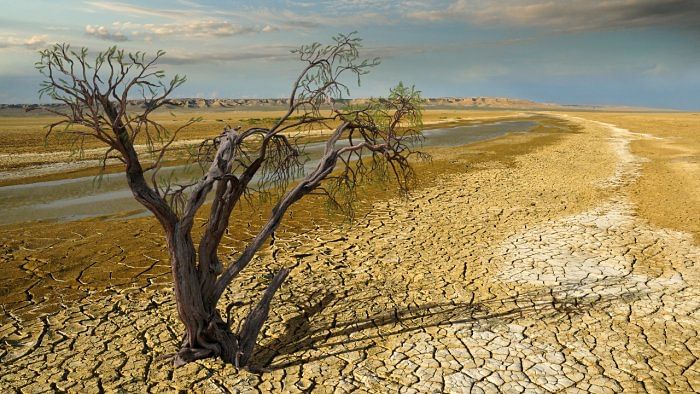
Stalagmites of a Meghalaya cave have revealed an accurate chronicle of severe and protracted droughts in India over the past 1,000 years coinciding with historical events like the abandonment of Fatehpur Sikri by the Mughals, the infamous Chalisa famine that killed 11 million and the Deccan Famine of the 17th century,
The stalagmite records also corroborate droughts during the Durga Devi famine of western India around 1400 CE, at the start of India’s deindustrialisation after the Mughal era, the Ming Dynasty drought of the 17th century and the monsoon’s failure in 1877 when the all India rainfall dipped below 30% of the average.
The records of severe and protracted droughts during periods of weak monsoon lasting decades stored in natural rock deposits have exposed the vulnerability of the Indian summer monsoon, which could periodically “lock” into a drought-prone mode that might last for decades, the scientists said.
In contrast, meteorological data of the past 150 years showed only one instance of 10-15% rainfall shortage that lasted for three consecutive years (1985-87). Moreover, there are only five instances of subcontinent-wise monsoon failure, of which the most severe one was in 1877.
"This seemingly reassuring but rather myopic view currently informs the region’s present-day water resource infrastructure and contingencies policies, and discounts the possibility of protracted monsoon failures in the future," the researchers cautioned in their study published in the Proceedings of the National Academy of Sciences on Monday.
"But historical documentary and proxy evidence show that Indian summer monsoon’s drought history in the past millennium was characterized by subdecadal to multidecadal periods of weaker monsoon that contained protracted droughts."
Reconstructing India’s drought history between 1080-1905 from oxygen isotope records in the stalagmites of the Mawmluh cave, the scientists found chemical evidence of a 25-year-long drought period in the Mughal era between 1595-1620, coinciding with Emperor Akbar’s abandonment of Fatehpur Sikri.
One of the largest cities of its time, Fatehpur Sikri briefly served as the capital of the Mughal empire for 14 years before it was discarded due to extreme drought and loss of water supply along with political and military reasons.
The pieces of evidence also support the "Deccan Famine” (1630-1632) - one of the most devastating mass mortality events in recorded Indian history; multi-year droughts in northern India between 1296 and 1316 under the reign of Alauddin Khilji and 11 drought-related famines in late 18th century, six of which, including the well-known Chalisa and Doji Bara or Skull Famines, occurred between 1782 and 1792 with a combined estimated death toll in the excess of 11 million, making it one of the deadliest decades in Indian history.
Even India’s deindustrialisation history in the 18th and 19th centuries has a climate link as loss of farm productivity led to the limited supply of grain, leading to an increase of wages in the weaving industry. This was coupled with a sharp rise in the prices of cotton.
"The early phase of deindustrialisation coincides with the most severe 30-year spell of the weak monsoon of the past millennium,” they reported.
While El Nino is widely blamed for poor monsoon in India, the researchers demonstrated that only in 20-50% of cases, the unusual warming of the Pacific could be held responsible for India’s historical droughts. The monsoon’s internal dynamics and other external forcing are equally critical.
